Updated on November 9th, 2022
Apricot preserves or jam, whether handmade or store-bought, is a delicious addition to various desserts. These preserves create a fantastic glaze for tarts, pies, and crostatas, among other baked items. The sweet, slightly acidic flavor provides a special touch to meal recipes, such as when coupled with savory chicken. A substitute for apricot preserves is required for a variety of reasons. The most common reason for substitution is allergies. Allergies don’t have to get in the way of great taste and texture.
Duck sauce, red currant jelly, orange marmalade, dried apricots, strawberry and raspberry jam, apple jelly, ginger jelly, cherry almond jam, homemade apricot preserves, canned fruit are among the vegan replacements available. The only non-vegan replacements are gelatin and honey, which are excellent for cooking and baking. Each substitute has a distinct flavor and texture that adds a special touch to the dish. When apricot preserves aren’t available, the article following will delve more into the options available.
What are Apricot Preserves?
Apricot preserves are pale orange in color and have a chunky texture.
The apricots give it a subtle flavor.
Because the two have similar flavors, many people compare it to apple butter.
The pulp, peel, and stones of apricots are cooked to make this preserve.
Sugar, pectin, and water are added to help the mixture thicken as it cooks.
Although apricot preserves can be consumed on their own, they are more typically used as a bread or toast spread, as a topping for ice cream or porridge, and even in baking.
It is well-known in France, but not so much in the United States.
The apricot’s fruitiness goes well with meats like pig, duck, and chicken.
Add some to glazes or marinades for a flavor boost for these foods.
Substitute for Vegan Apricot Preserves
1. Duck Sauce
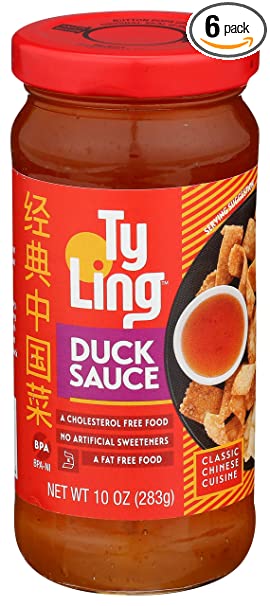
Duck sauce is best used in savory foods; however, it does not do well in sweet dishes. Apricots and spices make duck sauce, which goes well with chicken, pork, and ribs. The duck sauce’s added spices will complement the tastes already present in savory foods.
It’s a good substitute for apricot preserves, which are reasonably simple in larger grocery stores. It’s a suitable solution for individuals searching for a low-sugar option, while the sodium content compensates for the lack of sugar. Because the spices give it a slightly distinct flavor than apricot preserves, it’s better to use 2/3 of the recipe’s amount.
Many recipes benefit from duck sauce, such as Sweet and Sour Duck Sauce Chicken, to offer just one example.
2. Red Currant Jelly
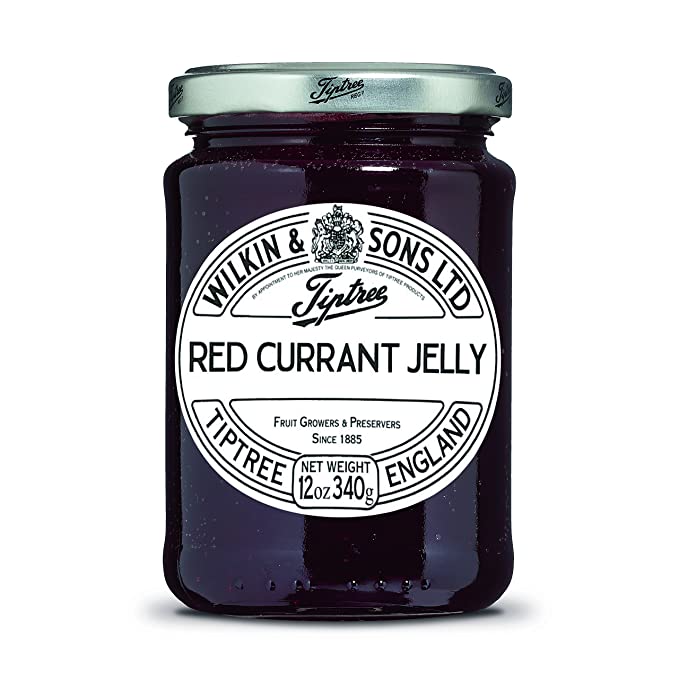
Red currant jelly, made with sugar, red currants, and rosemary, can be used in place of apricot preserves in a variety of savory meals. It goes nicely with various meats, including turkey, lamb, and chicken. Red currant jelly’s somewhat sweet and acidic flavor is comparable to apricot preserves, making it an excellent substitute in many recipes that call for apricot preserves.
Red currant jelly is very simple to produce, giving you more control over the sweetness and overall flavor. Furthermore, because this alternative and apricot preserves are so close, they can be substituted one-for-one, using the exact amount specified in the recipe.
3. Dried Apricots

Dried apricots, found in most grocery stores, are a terrific complement to savory recipes rather than as a glaze. Dried apricots, ideal for slow-cooked savory recipes, require time and heat to develop into a delicious complement to any recipe.
Because apricots expand when cooked, 6 ounces of dried apricots equals 2 cups of cooked apricots. When using them as a substitute, the recipe may need to be tweaked to account for the volume of apricots after being cooked. This ensures that they are not overbearing yet still produce a sweet flavor.
4. Orange Marmalade
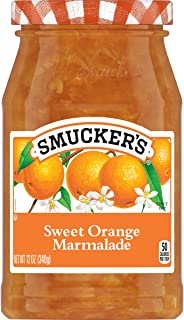
Orange marmalade, one of the greatest apricot preserves substitutes, has a bitter-sweet flavor since most makers use Seville oranges. Orange marmalade has a similar texture to apricot preserves and can be used as a glaze in savory and sweet recipes.
Orange marmalade, unlike apricot preserves, has a slightly bitter taste that isn’t perceptible in savory foods but is likely to be on pastries, for example. The amount of orange marmalade needed can vary depending on the recipe.
It’s fine to use the same amount as the recipe for savory recipes, and lowering the amount is better for baked items like pastries or cookies. To keep the bitterness from becoming too overwhelming, start with 2/3 of the amount called for in the recipe.
5. Jam with strawberries and raspberries
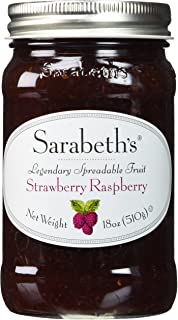
In meatloaf, strawberry jam and raspberry jam can be used instead of apricot preserves. Savory fruits like strawberries and raspberries will substantially enhance the meatloaf’s original flavor. These two fantastic ingredients will keep the meatloaf moist and flavorful by preventing it from drying out.
6. Apple Jelly
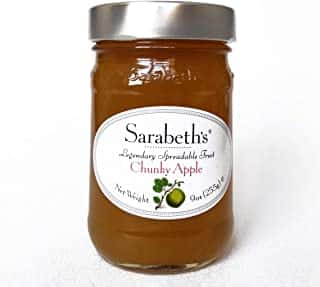
Apple juice is combined with other components such as pectin, corn syrup, citric acid, and sugar to make a fruit preserve. It’s great on toast, muffins, and other baked products, and when combined with cinnamon and cloves, it makes a fantastic pig glaze.
Of course, apple jelly does not have the same flavor as apricot preserves, so it may not be ideal for some recipes like pudding or chicken, but it is excellent as a glaze for pastries. Even if the flavor is somewhat altered, the apple jelly will add a unique flavor to the recipe.
Despite the differences in flavor, the sweetness level is similar. When substituting, it’s fine to use the same amount of apricot preserves as called for in the recipe. The flavor will be varied, but the sweetness level will remain consistent.
How do you Make Apricot Preserves at Home?
Make your own when in doubt. Making homemade apricot jam is simple; you only need a few ingredients and some time. The nicest part about using this method as a substitute is that you have complete control over the components and their amounts, achieving the perfect consistency and sweetness level.
Of course, there’s a good chance that homemade will taste better than store-bought and that it will be a welcome addition to any recipe. Because the recipe asked for apricot preserves in the first place, use a one-to-one substitution.
If you opt to go this route, the National Center for Home Food Preservation includes a recipe and canning methods to keep your food fresh for later use.
To make 10 half-pint jars, gather the following ingredients:
- 2 quarts apricots, peeled and crushed
- a quarter cup of lemon juice
- sugar (six cups)
- Simple to follow Steps: In a large saucepan, combine all ingredients.
- Bring the water to a boil.
- Stir the mixture occasionally to ensure that all of the sugar has dissolved.
- Cook for about 25 minutes, or until the mixture is thick.
- Remove from heat, set aside to cool before using, or proceed to can the jam or preserve it in hot sterilized jars.
What are the Best Apricots for Making Jam?
The finer the jam, the riper the fruit. Jam is an excellent way to use blemished, bruised, or soft fruits. You can use it as long as it hasn’t started to mold. We salvaged all of the apricots we used for this year’s batch of jam off the ground. Less waste means more flavor!
Apricots are very popular in Paul’s home country of Austria. People in the Wachau valley produce and utilize a native heritage variety that is modest in size but has an unrivaled flavor.
To prepare this jam, you can use any variety of apricots, but the better the flavor of the fruit, the better the jam!
Apricots can be frozen and used to make jam at any time of year. Before freezing on a tray, cut them in half and remove the stones. You may also prepare our delicious vegan apricot cake using frozen apricots.
What Kind of Sugar Should I Use to Make Jam?
Apricots aren’t very high in pectin by nature, and the less pectin in the fruit, the riper it is. As a result, using sugar with extra pectin to make it easier and faster to set is beneficial.
Sugar Jam
Jam sugar is a type of sugar specifically intended for creating a jam. It comprises pectin and, in most cases, citric acid to aid in the gelling of the pectin.
Traditionally, the jam has a sugar-to-fruit ratio of one to one. To put it another way, 1 kilogram of sugar equals 1 kilogram of fruit. In this case, common jam sugar has just the appropriate amount of pectin and citric acid to provide the optimum results.
Jam sugar with a 2:1 or 3:1 ratio is also available in Austria and Germany. These have more pectin and citric acid, so you may produce a fruitier jam with less sugar. They usually include a preservative to extend the jam’s shelf life.
However, we cannot obtain these 2:1 or 3:1 jam sugars in the United Kingdom. We did some study and discovered that by using more fruit and utilizing typical 1:1 jam sugar, we can make jam that is both palatable and long-lasting.
How to Store Jam?
Here’s how to keep your apricot jam fresh for a long time:
Use clean jars that have been sterilized with boiling water or in the oven at 120°C for 10 minutes. Also, remember to do the same with the lids!
Sterilize all of the utensils you’ll use to make the jam and fill the jars. This could be a ladle, funnel, or another such item.
After filling, some folks place their jars upside down on their lids. From the inside, the hot jam sterilizes the cover. You’ll also notice if a jar doesn’t close properly right away…
Keeping your apricot jam in a cold, dark place should last at least a year.
Keep the jam refrigerated once it has been opened.
Always use a sanitized spoon. It’s best not to use it for anything else, such as spreading jam on toast. Use a different knife from the one you used to distribute the margarine. When a jar of jam is opened, this is one of the most typical reasons for it to spoil.
While the jam is still hot from the heat, jar it up. Most microorganisms that would catch a ride are killed due to this. It also ensures that the jar shuts when the jam cools, with an audible ‘pop!’
After filling, some folks place their jars upside down on their lids. From the inside, the hot jam sterilizes the cover. You’ll also notice if a jar doesn’t close properly right away…
Keeping your apricot jam in a cold, dark place should last at least a year.
Keep the jam refrigerated once it has been opened.
Always use a sanitized spoon. It’s best not to use it for anything else, such as spreading jam on toast. Use a different knife from the one you used to distribute the margarine. When a jar of jam is opened, this is one of the most typical reasons for it to spoil.
How to Know Jam is Ready to Eat or Not?
When the jam is heated or hot, it always has more liquid than when it is chilled. So, how can you know what to expect? There’s a neat trick here (quite literally).
Place a few saucers in the freezer before you start making the jam. It’s time to run some gelling tests once you’ve finished creating the jam, and here’s how to do it:
Remove a saucer from the freezer and spread a small amount of jam across it.
Allow the jam to cool on the icy cold platter for a few minutes. If it spreads out into a thin layer on its own, that’s a sign it needs extra cooking time.
To see how well the jam has set, tilt the plate. It’s done when it only flows slowly and forms small wrinkles when pushed with the back of the spoon.
If the jam fails this test, simmer it for a few minutes longer and repeat the gelling test with a fresh saucer from the freezer every few minutes.
The jam will thicken over time, but the wrinkles are the most dependable indicator that the jam is done simmering and ready to be bottled.
When you stir the jam in the saucepan slowly, you can see the wrinkles. The jam is ready when you see those tiny wrinkles in front of a boat, like small waves.
Conclusion
Apricot preserves give any recipe a touch of sweetness, taste, and texture. However, there are times when a replacement is required. Either you started cooking and ran out, or forgot to get them. Perhaps someone has a food allergy that precludes them from ingesting the ingredients. In any case, finding an apricot preserves alternative is not difficult and will only improve any dish.
